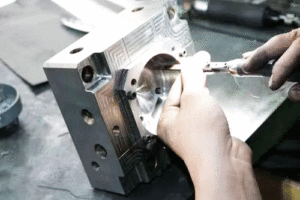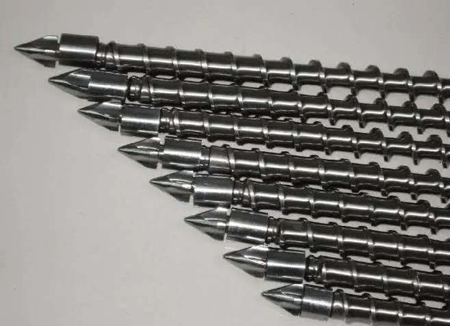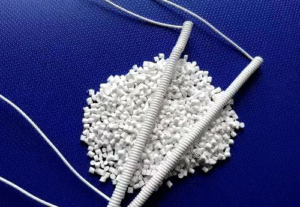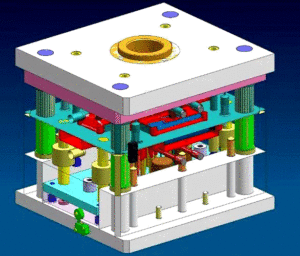
Polishing Treatment for Plastic Molds
Polishing Treatment for Plastic Molds With the widespread application of plastic products, such as daily-use items and beverage packaging containers, there is often a requirement
As we all know, the “screw plasticizing component” is the main core unit of the injection molding machine. And it directly reflects the performance of the injection molding machine. The screw is a crucial part, whose performance determines the quality and efficiency of the processed products.
With the rapid development of the plastics industry, injection molding equipment has matured. As designers and users of injection molding equipment, it is necessary to clearly understand which screws are suitable for the processing of which materials. There are multiple types of screws on the market. But in actual use it is rather chaotic. Users often use a certain screw to process plastics with unsuitable physical properties.
There is also a misunderstanding of concept: “A screw is omnipotent”. However, it is wrong. In this way, we will introduce several commonly used screws with main structure to provide some reference when processing products.
(1) Amorphous plastic, no obvious melting point, glass transition temperature 140℃-160℃, melting temperature 215℃-225℃, molding temperature 230℃-320℃.
(2) High viscosity, high processing temperature, narrow range, easy to decompose. Avoid overheating when selecting screw.
(3) Sensitive to moisture, the resin is easily hydrolyzed under high temperature. The drying temperature is 120℃-130℃, and the time is about 4 hours.
(1) In view of its characteristics of good thermal stability and high viscosity, a large aspect ratioshould be chosen for L/Dto improve the plasticizing effect.
(2) Because of its wide melting temperature range, long feeding section, short homogenization section, and moderate compression ratio, barrier type over-rubber heads can be used to increase the plasticizing effect.
(3) If you add flame retardant or glass fiber reinforced PC material, you can choose to use corrosion-resistant and wear-resistant high-quality stainless tool steel screw and three small pieces.
(1)
(2) The viscosity is large, the fluidity is poor, and the shear rate is more sensitive. So we must strictly control the temperature during processing.
(3) The temperature of the barrel is 240℃-250℃. While the residence time will not exceed 8 minutes when it exceeds 260℃;
(4) Strong water absorption, drying temperature 80℃-90℃, time for over 3 hours.
(1) Select the ratio of length to diameter 20-22for L/D. And the gradual screw is generally L1=35-45%, L2=35-40%.
(2) The compression ratio ε is generally 2.3-2.6.
(3) Because it has a certain degree of hydrophilicity, a mixing head structure is adopted at the front of the screw.
(1) There are many types of crystalline plasticswith differentmelting points. The upper melting point range is narrow. Generally, the melting point of PA66 is 260℃-270℃;
(2) Low viscosity, good fluidity, relatively obvious melting point, and poor thermal stability.
(3) The water absorption rate is high. Andthe temperature of the dryer is 80℃, not more than 120℃, and the time is 16 hours. If the raw materials are exposed to air for 8 hours, then they should be put in thevacuum oven at about 105°C for 12 hours.
(1) Select a mutant screw with a length ratio of 18-20for L/D.
(2) The compression ratio is generally 2.5-3.5. And prevent overheating decomposition h3: 0.067-0.089D.
(3) Because of its low viscosity, the gap between the rubber ring and the barrel should be about 0.05-0.08. Whilethe gap between the screw and the barrel should be 0.08-0.12.
(4) The nozzle can be equipped with a spring self-locking nozzle.

*chemical name: polyethylene terephthalate
(1)
(2) High melting point, low viscosity, strong adhesion to metal, easy to hydrolyze.
(3) Hydrophilic, viscous material is more sensitive to water at high temperature.
The drying temperature is 150℃-160℃, and the time is more than 4 hours.
(1) L/D generally takes 20-22, three-stage distribution L1=50-60%, L2=20-30%.
(2) Uselow shear and low compression ratio screw compression ratio ε=1.8-2.2, because shear overheating causes discoloration or opacity h3=0.09-0.10D.
(3) When using recycled materials (sheets), increase the conveying capacity of the feeding section and adopt a forced feeding plasticization system.
Heat-sensitive materials are generally divided into hard and soft. The difference lies in the amount of plasticizer added to the raw materials. Less than 10% is hard and more than 30% is soft.
(1) No obvious melting point, soft at 60℃, viscoelastic state at 100℃-150℃, narrow melting temperature range at 140℃.
Poor thermal stability, easy to decompose, rapid decomposition at 170℃, softening point close to decomposition point, decomposition release HC1 gas.
(2) Because of thehigh viscosity, poor thermal stability of UPVC melt, temperature and time will cause decomposition. Thus, it has a corrosive effect on general steel.
(3) The temperature control is strict.
The sheer of screw design should be as low as possible to prevent overheating. At the same time, runner must be smooth. Besides, there should be no dead corners to prevent the accumulation of material from decomposing.
(4) The screw and barrel should be protected from corrosion.
(5) The injection molding process needs to be strictly controlled.
(1) L/D=18-21, h3=0.067-0.08D, ε=1.6-2, L1=40-45%, L2=35-45%
Use hard chrome plated screw.
(2) The temperature control:
①Multi-stage air-cooling device for the glue cylinder.
②Special screw and barrel device for low shear and high mixing UPVC.

Polishing Treatment for Plastic Molds With the widespread application of plastic products, such as daily-use items and beverage packaging containers, there is often a requirement

Injection Molding Techniques for TPE and TPR Injection Molding Techniques for TPE and TPR 1. Dry the TPE and TPR material before injection molding It

Winter Maintenance Measures for Injection Molding Machines As winter approaches and temperatures gradually drop, a cold chill envelops the earth. While ensuring personal warmth, it

Assessment Regulations for Mold Trial Exceeding 3 Times Assessment Regulations for Mold Trial 1. Purpose The purpose of this regulation is to standardize the work of